
League of Legends features over 130 Champions that come from different backgrounds with distinguishable style. Although it often becomes an issue that similarities exist among certain Champions that share the same role within the game, today's session revealed how much Riot Games is dedicated to making each Champion exclusive through establishment of unique style and personality. When these features are enriched with lores and other details that follow, they altogether form an identity like no other.
Riot Games’ senior development manager Jeremy Lee explained today how his team conducts the job of creating new Champions. Walking through the example of how his team created Jhin from an empty slate, Lee explained the process of six stages the team goes through every time they create a new Champion.
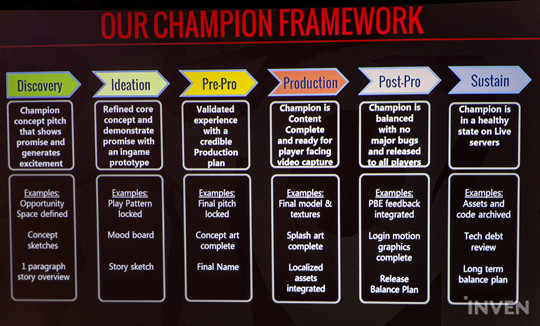
Discovery
The team starts with a concept pitch that shows promise and generates excitement. In the case for Jhin, his codename when the team first came up with the idea was Deadeye. The goal at this stage is yet simple and vague; in this case they wanted to create a marksman Champion with long-range sharpshooter gameplay mechanics and sinister personality. The vague silhouette of a potential Champion is born, and the team proceeds to the next stage to narrow down the details of what the new Legend would be like.
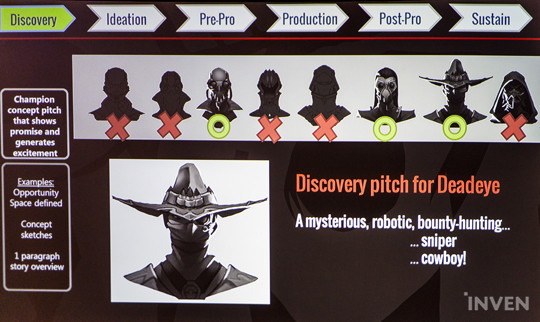
Ideation
This phase is when the team starts to draw a more specific picture of what the Champion would be like. The team talks through why the team should bring Deadeye among already existing 133 other Champions, which makes it important to establish the strategic identity of the potential Champion. The question of how the team is going to make the Champion fun and interesting is also addressed, which is the stage where many potential Champions fade away. Once these are done, the team can now proceed to the next phase with refined core concept and how the Champion will fight in the Rift.
Pre-production
Lee picked this phase as the hardest one in the entire process, because this is the stage where different mindsets regarding the new Champion really begin to collide. Intended player experience with the new Champion should be validated, and the team also has to come up with a credible production plan that is feasible and promising. Further details of the Champion such as costume design and posture are also determined in this phase.

Going through the pre-production phase, the team ultimately prepares the final pitch locked and loaded to make its debut in the Rift through upcoming production process. Lee insisted that it is important to make sure that the final pitch is clear with solid plan and mission statement. Making changes to the Champion becomes much more burdensome by the time it is handed over to production, so it is important to make sure the details are finalized before proceeding to production phase. Lee said that the later you try to change something, the more costly and painful it becomes to make the changes. He also added that his team normally spends five months until the Champion is ready to be produced, out of the nine months Riot Games usually takes to release a new Champion.

Production
Production phase is when the proposed details are finally woven together. The goal of production stage is to make the Champion ready to make his/her debut to the Rift. This is also when the team works on creating contents to show people, for example video clips that introduce the Champion’s skills.
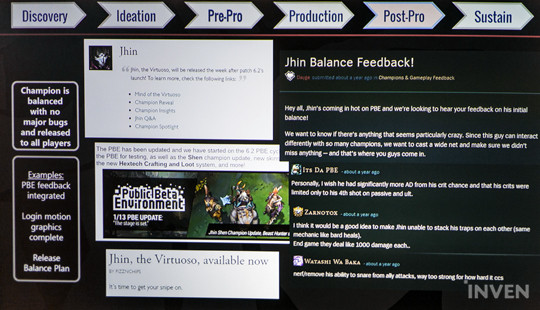
Post-production
This is when the Champion is released to the public and available to be played. Riot Games also utilizes its Public Beta Environment at this stage to better balance the Champion’s strengths and weaknesses while also clearing off the remaining bugs before the new Champion is introduced to live server. Such measures are taken to minimize the noise when the Champion is released, while also delivering a more stable experience to the players upon the Champion’s arrival.
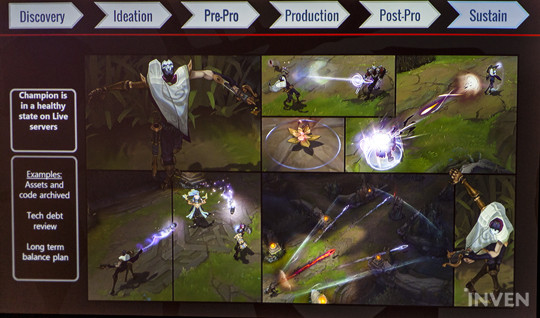
Sustain
This is the final phase, where the Champion is constantly monitored to make it sure that he/she is doing well among other Champions in the League. This involves tweaking the Champions’ balance in the periodical patches to make sure that no one is left behind or underperforming.
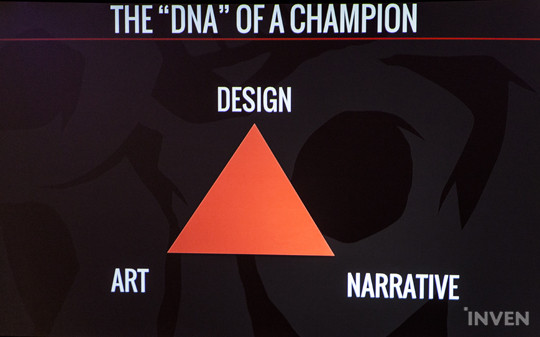
Champions that can resonate with their players
Lee stated in today’s session that Riot Games’ goal is to make thematically cohesive Champions that can resonate with the players. The three components of art, design, and narrative bond together to create a Champion, the Legend that can resonate within the Summoner’s minds for a long time. The six phases enhance the cohesion of the three components, which ultimately gives birth to a powerful personality that cannot be so easily forgotten.
Sort by:
Comments :0






